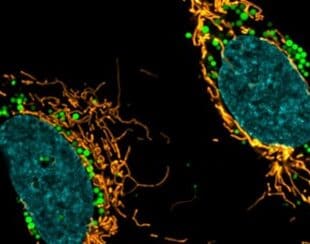
In the food industry there is the concept of from farm to fork, to focus on safe, sustainable food production, consumption, processing and distribution. Testing and calibration laboratories perform the analysis of the raw materials, processed ingredients and final product supported by a dedicated ISO norm 17025 to monitor quality during the whole process. As an example, harvesting crops until it is part of a Caesar salad ready to eat. This doesn’t only monitor the various parameters on nutrition, the presence of pesticides or heavy metals but also creates an audit trail in case there is an issue, for instance a recall of a food product. Compliance with ISO is an order qualifier for any commercial testing laboratory to be able to be in business.
Academic institutes, hospitals and biotech companies on occasion are still individual pillars in the process of understanding diseases and developing new treatments. However, with the launch of the specifically created biobank ISO 20387, a central focus to increase overall quality is now within reach.
Securing all steps whilst at the same time being compliant can help to further increase the quality of the samples and associated data, which is mandatory for industry to be able to use the samples. Supporting the process from inception to injection could be the ultimate goal for biobanks. The moment a donor or patient is registered for sample collection and moves through the process, the use of tissue, serum or plasma enables the potential for new drug development or scientific papers to be produced.
Thermo Fisher Scientific’s compliance services for laboratory equipment can support with installation, operation and performance qualification as well as preventive maintenance and temperature mapping as part of audit readiness.
This requirement may not always be needed in an academic environment, but it can certainly help to have a positive impact on the overall quality and is a good starting point in the goal for full implementation of the new ISO standard. Taking appropriate instrument/equipment qualification steps to ensure accurate test results that are repeatable is key for a successful transition from discovery to manufacturing.
This validation approach is very common in pharmaceutical industry and can also help in the process of increasing the number of private public partnerships where samples are needed and used. Supported by full chain of custody and data to see where improvements can be made, the various stakeholders can further optimise their efforts to help drive breakthroughs for the patient.
Therefore, let’s make sure valuable work doesn’t get lost, or can’t be used by missing records, gaps in the audit trail or incorrect operation. It’s good to explore how other markets have solved specific issues and be inspired by how farmers, food producers, retailers and testing laboratories came together to secure safe food.
Where biobanking is a mindset, Learn more.
https://www.thermofisher.com/us/en/home/clinical/biobanking/biobanking-learning-center.html?cid=lpd_cbu_sbu_r01_co_cp1420_pjt6953_lps000000_0so_blg_op_edu_og_s00_Biobank-FoodSafety




Leave a Reply